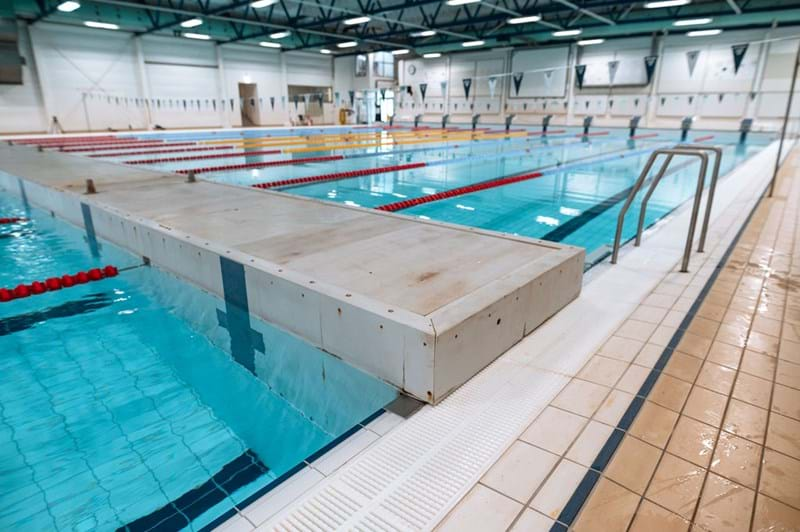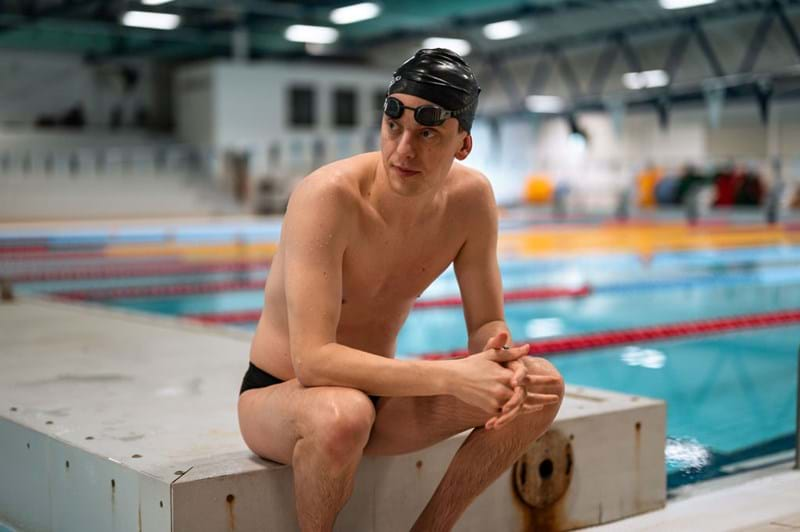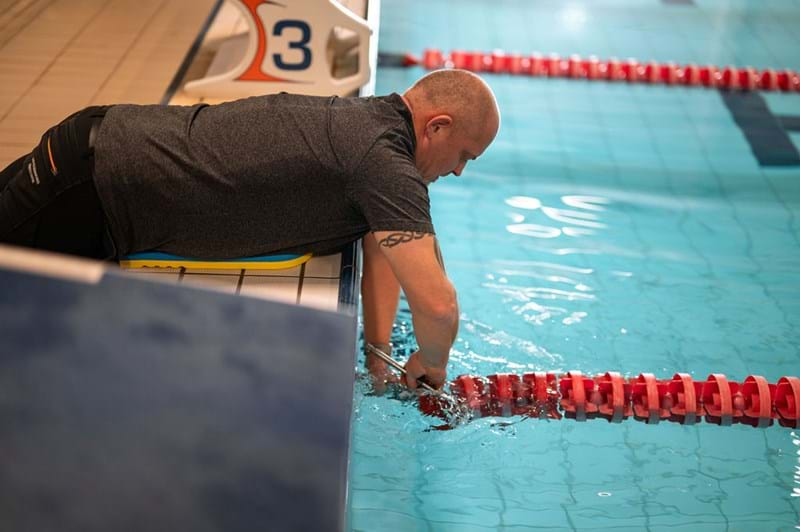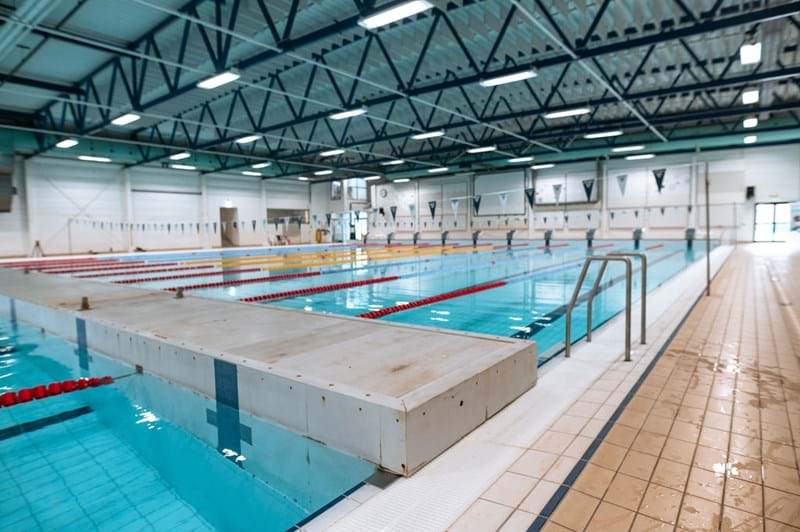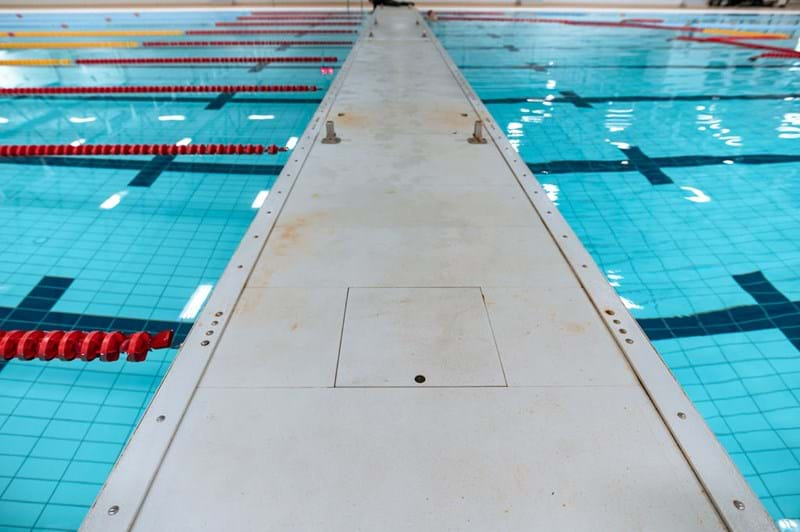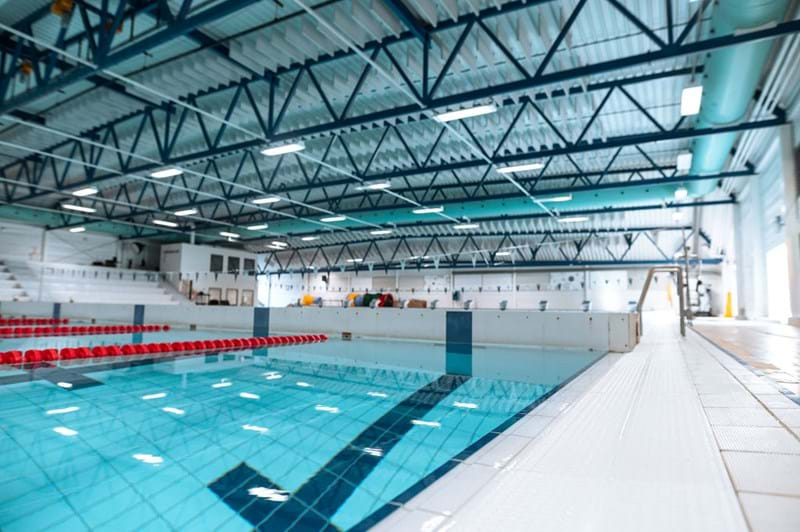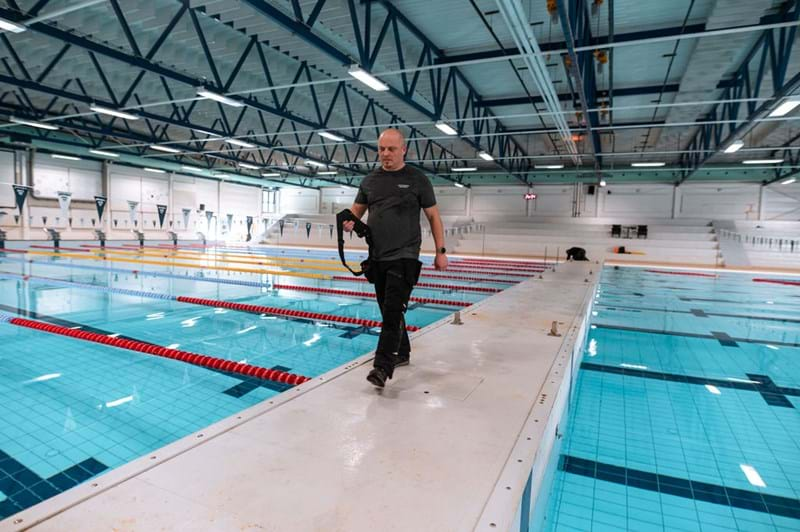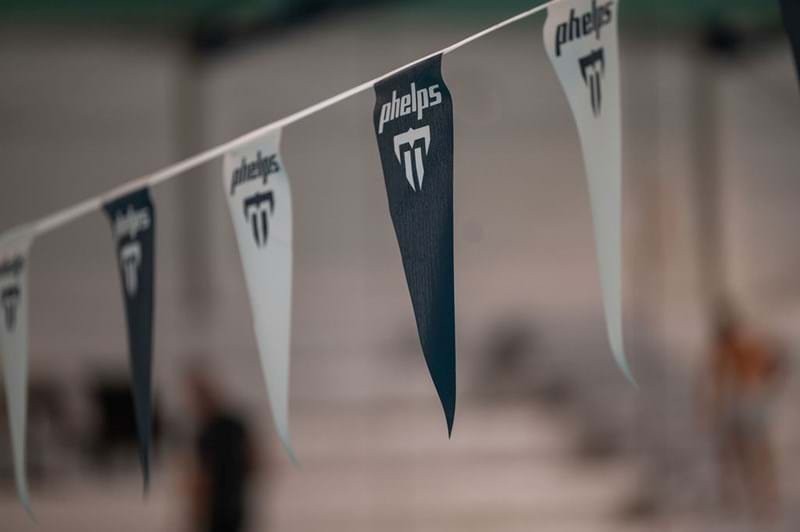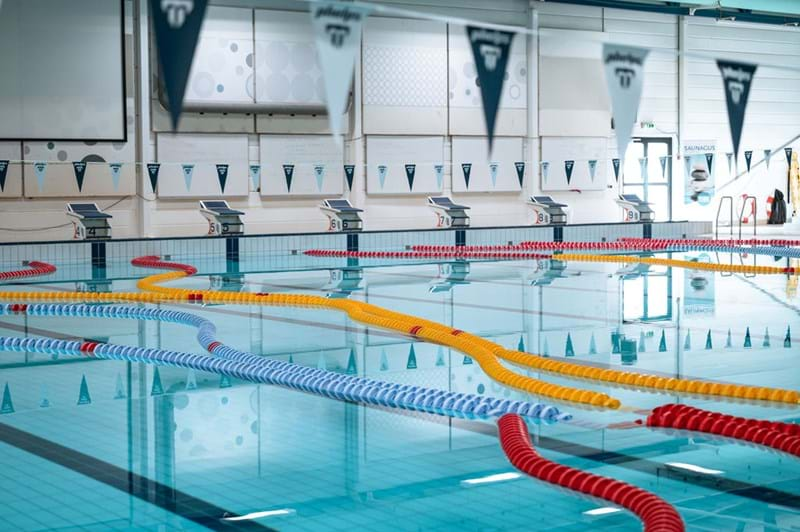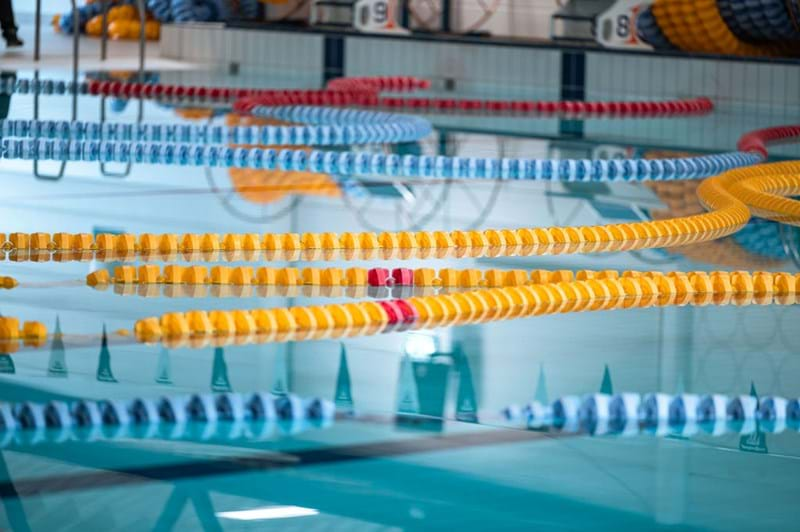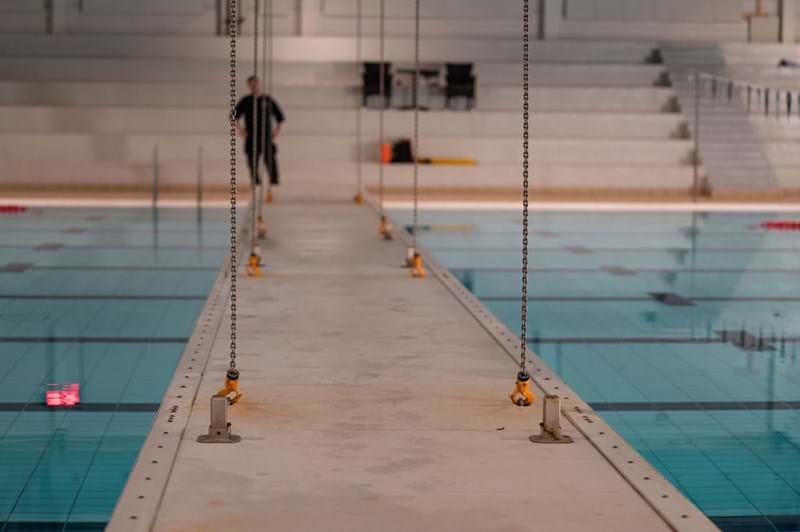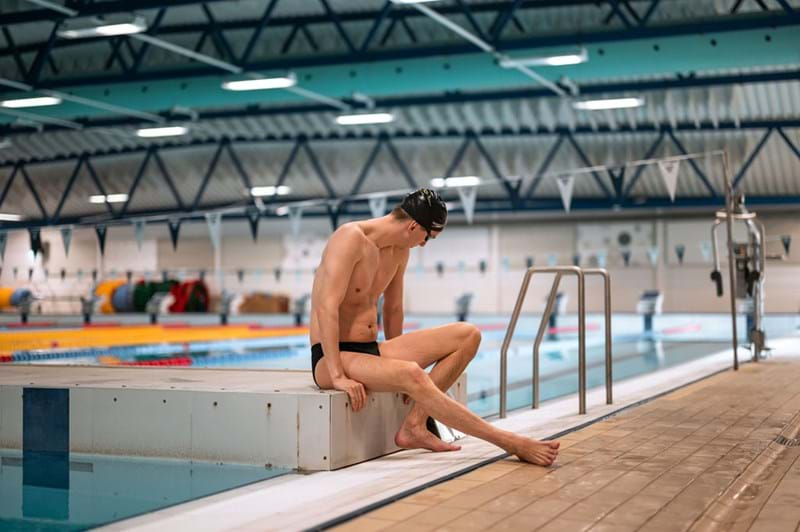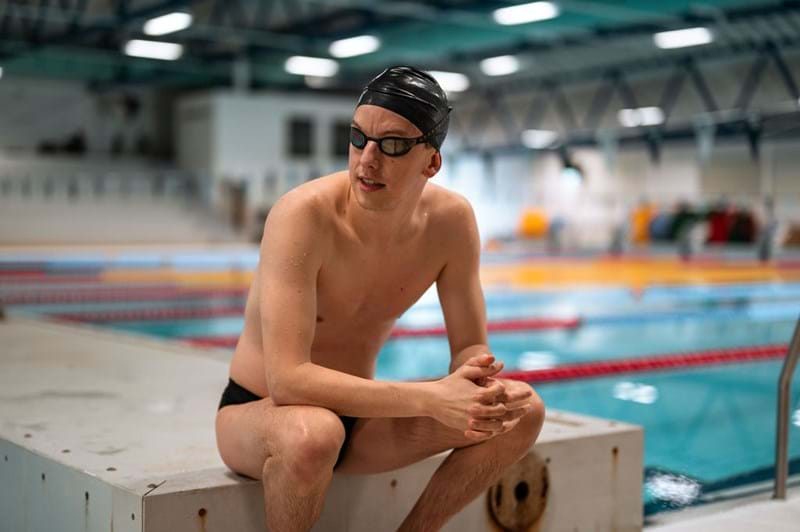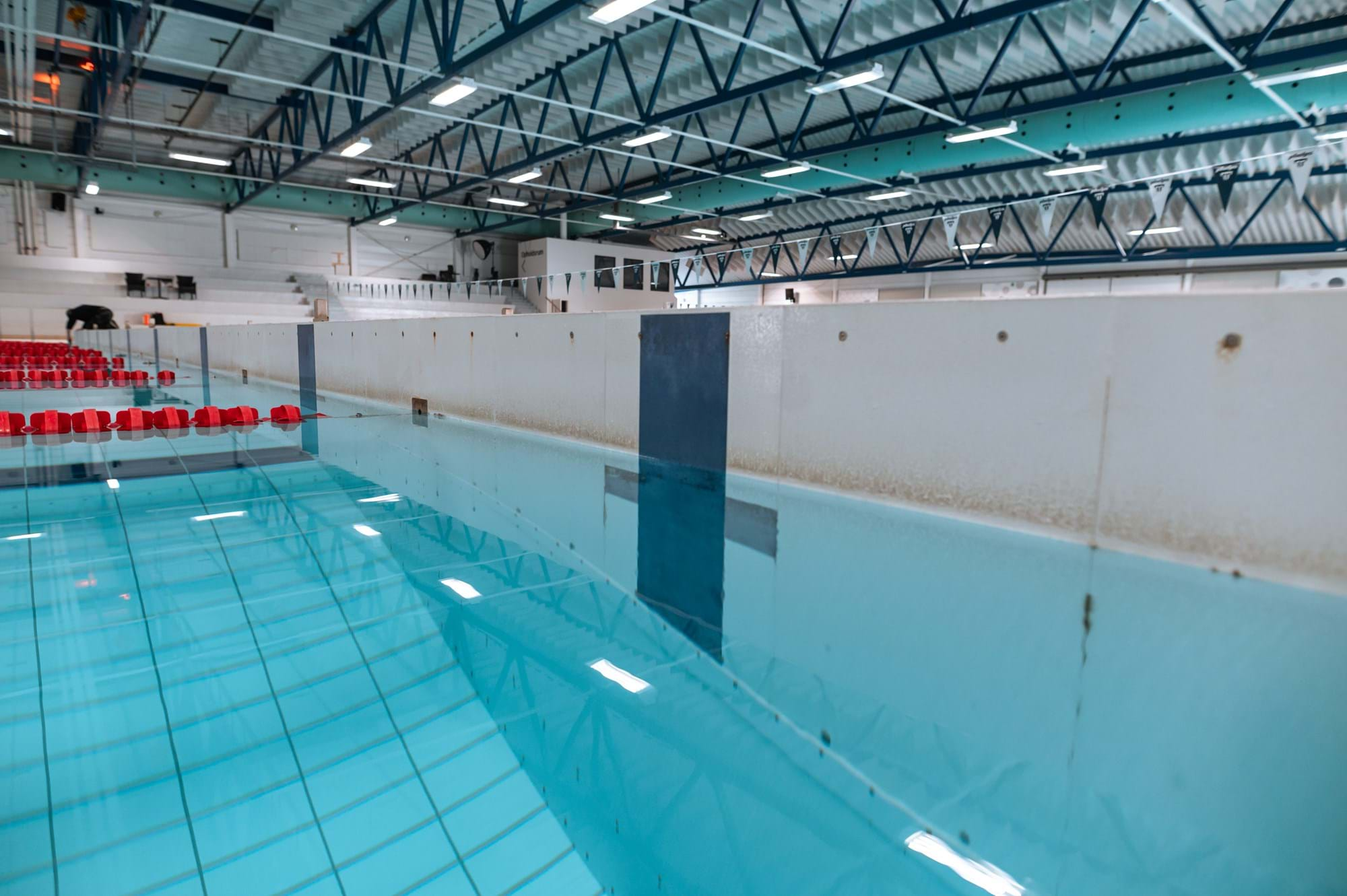

In 2004, in connection with the renovation of the Aarhus Swimming Stadium, the municipality decided to have a lift and lower bridge from Fiberline constructed and installed in the pool. This decision was made to enable swimming along the length of the pool, where it had previously only been possible to swim across during competitions.
Michael Ottesen, who is employed as a technical coordinator by Aarhus Municipality and is responsible for the swimming stadium, emphasizes the importance of being able to divide the pool.
"Swimming today involves swimming both in long and short lanes. With a 50-meter pool, we need to be able to set up a short lane – that is, a 25-meter lane. Therefore, it is necessary for us to have a bridge like the one from Fiberline, which we can lower to create a 25-meter pool."
Watch the video below and listen to Michael explain about the bridge
In Aarhus Municipality, there is an awareness of the minimal maintenance associated with a fiberglass swimming pool solution compared to stainless steel, which is often seen in other swimming pools. It is also noted how incredibly durable the bridge is after many years in chlorinated water.
"When you look at the stainless steel railings and ladders we have here in the swimming pool, it quickly becomes clear that they can easily start to rust. They are maintained weekly, where they are wiped down and oiled by us. This challenge is non-existent with fiberglass. You can clearly see that it makes a difference that we have chosen fiberglass," Michael Ottesen explains.
Strength & stiffness was another critical criterion for choosing a fiberglass bridge, as it needs to withstand swimmers' turns without yielding. It is essential that swimmers get a solid push off in their turns from the bridge underwater. When the bridge is lowered into the water, two pegs on each side of the bridge are activated, settling on the pool's edge to guide it. "It's very important," Michael emphasizes, "that it is placed correctly."
"When swimmers need to be approved according to FINA's rules, the lane must not be more than 1 cm longer than 25 meters, to be approved for competitive swimming. It is vital that the bridge stands firmly," Michael continues.
"Had another material been chosen, I doubt one could find anything as effective as fiberglass. I would undoubtedly choose fiberglass if I were to acquire something new for this place." - Michael Ottesen.
